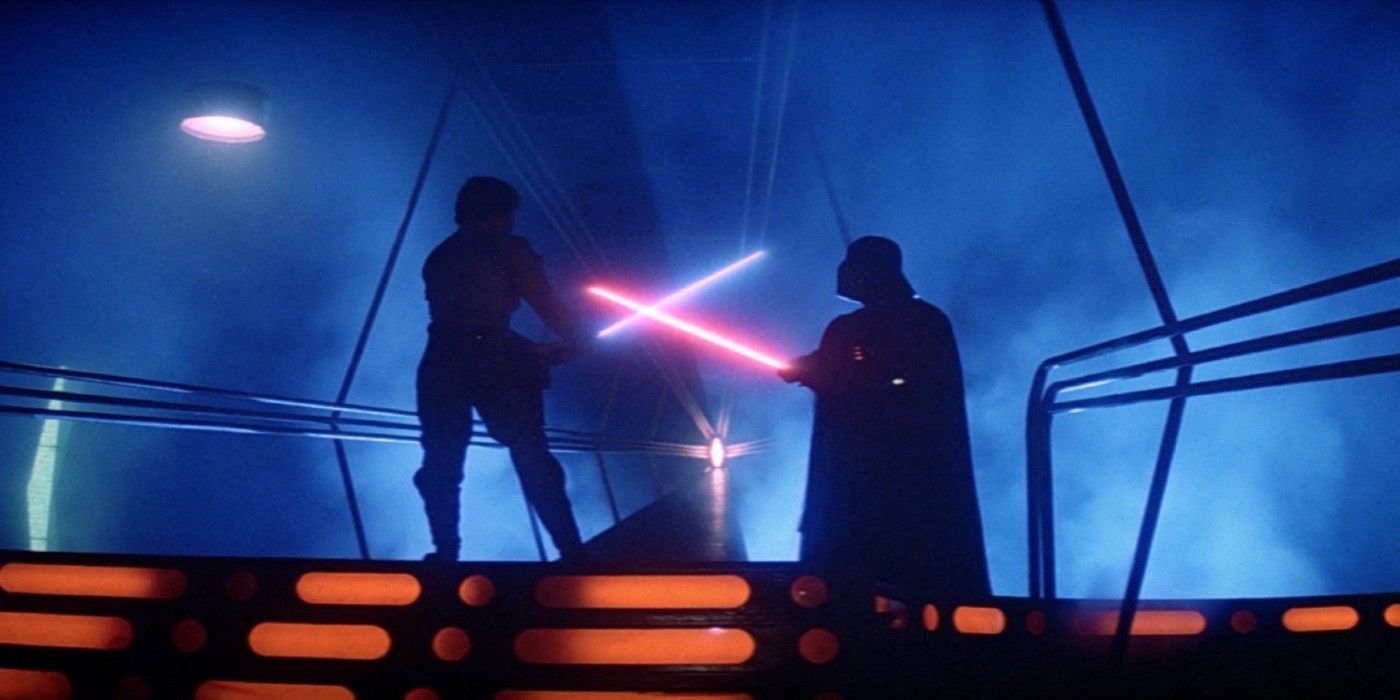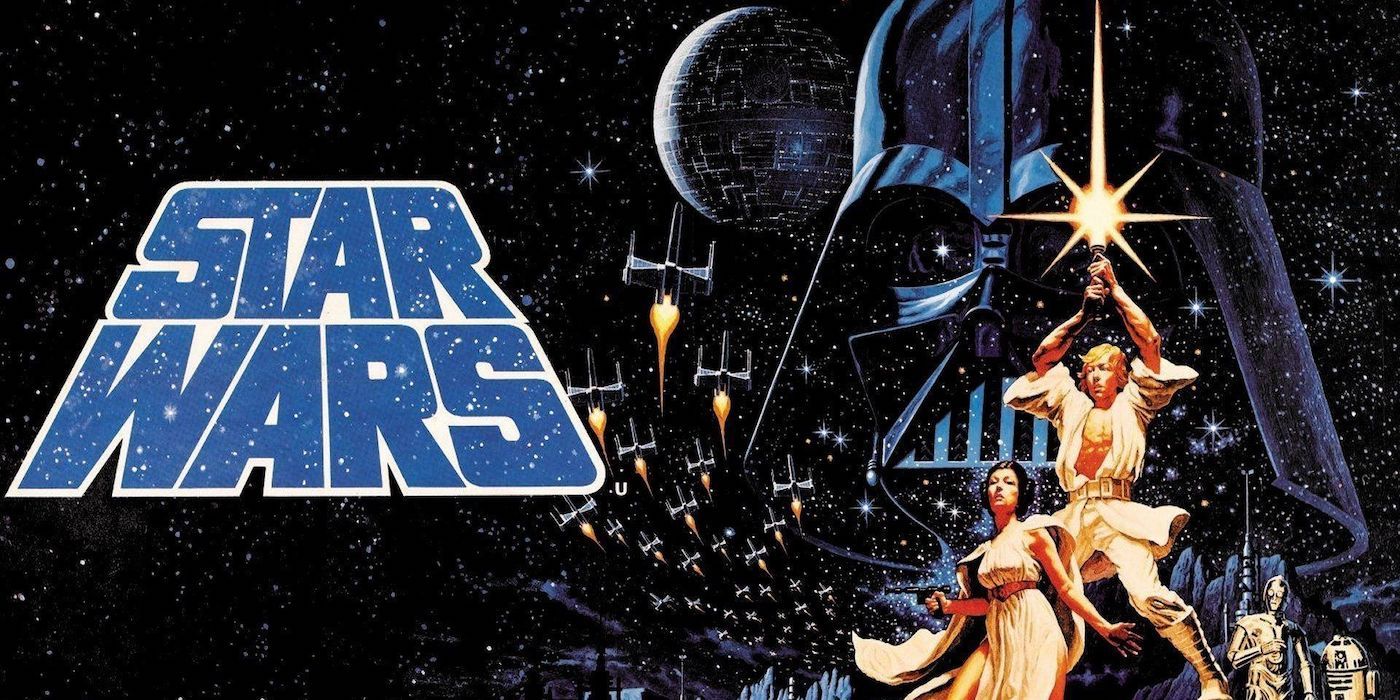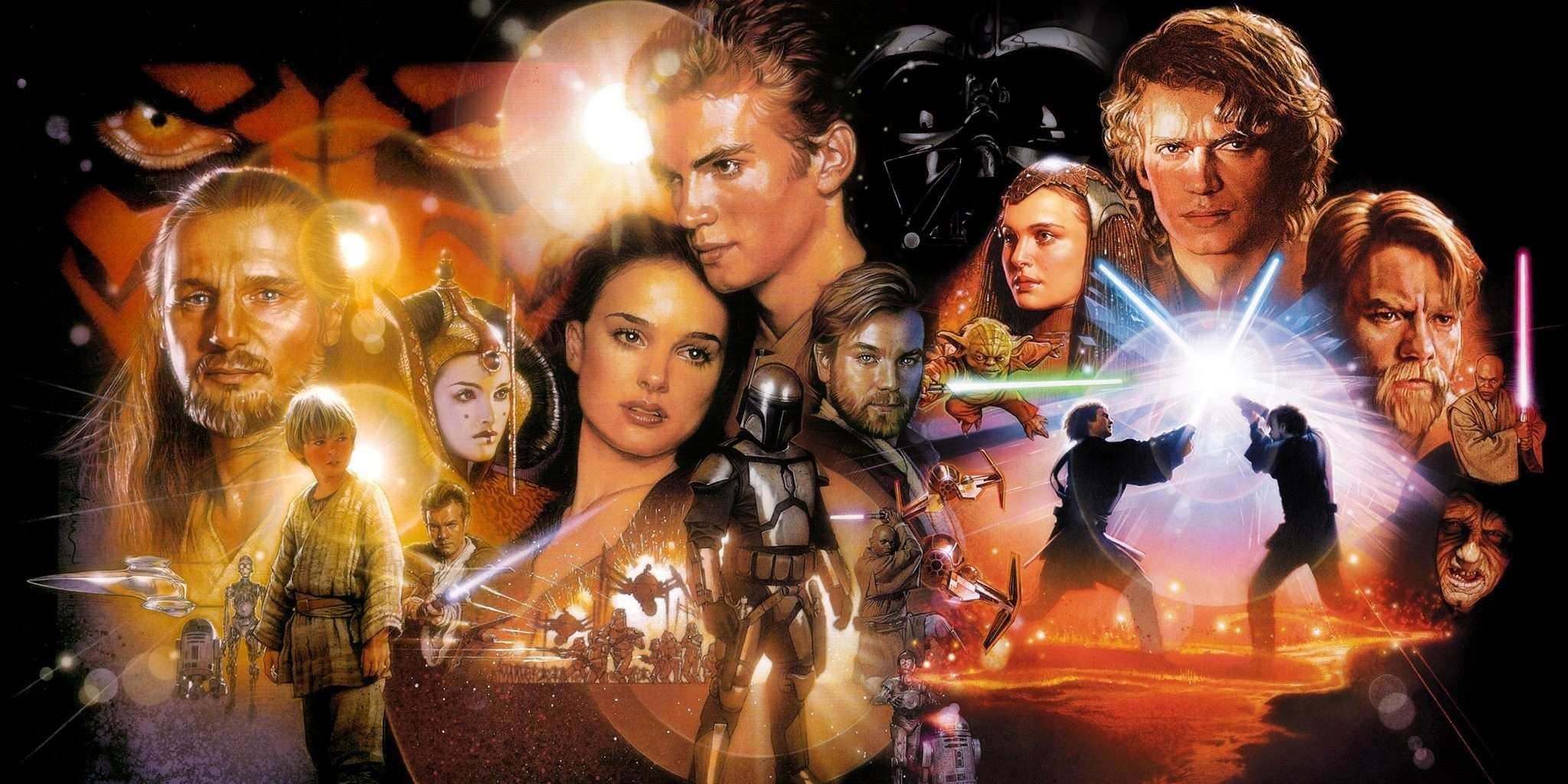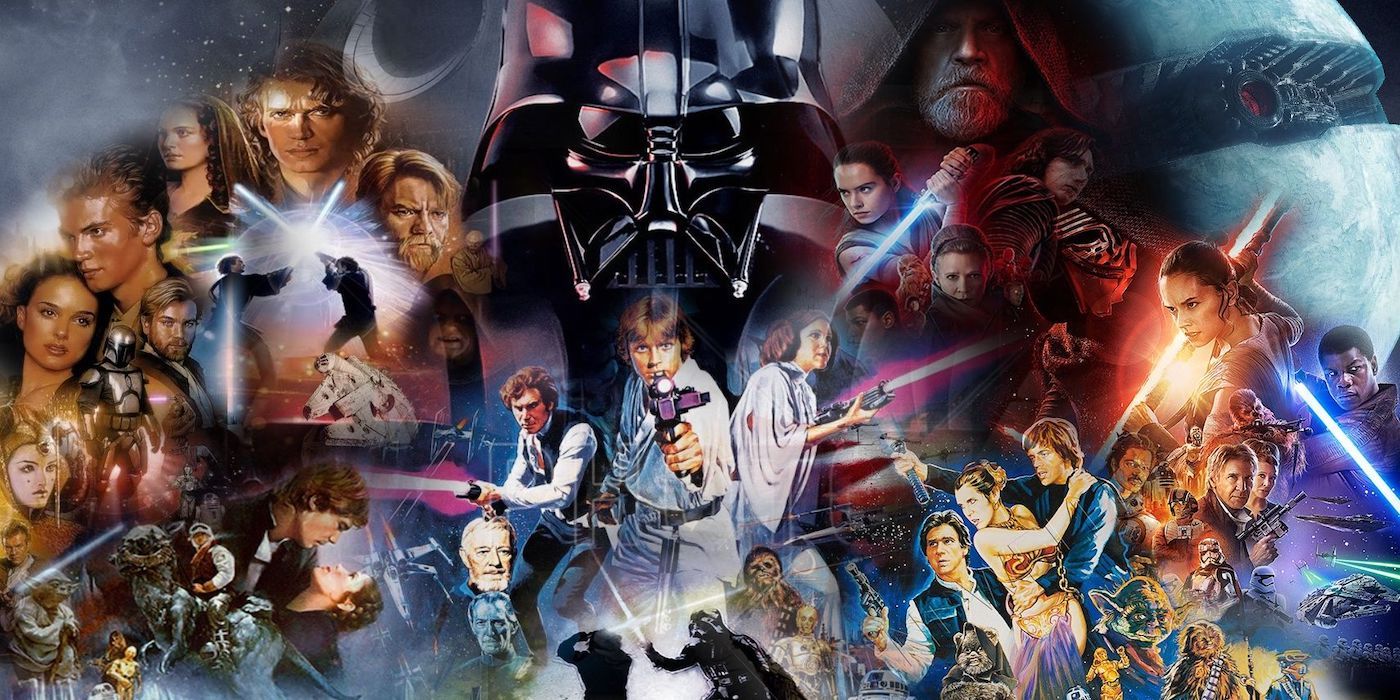Another Star Wars day has come and gone. In the best years, May 4th comes on a weekend, teeing up the perfect opportunity for a movie marathon. This year fans may have to wait a little longer to start a grand Star Wars re-watch, but waiting comes with its own benefits, like figuring out how to watch all the movies in the first place.
The prequels introduced the problem of viewing order to Star Wars. Suddenly there were two through lines in the franchise. One was story of Anakin Skywalker, and the other was the story of his son, Luke. The Disney era of Star Wars has added plenty of complications to the view order debate. Now that the Skywalker Saga is finished, and the weekend is just around the corner, it's a good time to review the pros and cons of the various Star Wars viewing orders.
Release Order
The most straightforward way to watch the Star Wars movies is to follow their release order. The original trilogy would kick off the movie marathon, followed by the prequels. With all of George Lucas's Star Wars films finished, Disney's sequel trilogy can close out the series.
Watching Star Wars in release order simulates the experience fans had moving through the franchise for the very first time. Luke Skywalker's story still serves as the selling point for the entire franchise. The prequels fill in the backstory of the Empire's and Darth Vader's rise to power. Disney's sequels disappoint or delight according to the taste of whoever is sitting in front of the screen.
The downside to using release order for a Star Wars marathon is that, extreme opinions aside, the best films are over first. Some people prefer the prequels to the sequels, while others would rather pretend the prequels didn't exist. Either way, fans almost universally agree that the original trilogy are the best films Star Wars currently has on offer. After starting with the original films, moving through the prequels and sequels could feel like a slog through lesser material.
Chronological Order
The nine main Star Wars films tell the "Skywalker Saga," but they didn't tell that story in order. The chronological viewing order suggests watching the "Episodes" sequentially. The marathon would start with the prequels, then move through the original trilogy and the sequels.
There are some major benefits to watching Star Wars chronologically as opposed to going with release order. George Lucas has said that Episodes 1-6 are really the story of Anakin Skywalker's fall and redemption. Starting with the prequels centers Anakin as the main character in Star Wars. It also gets some of the weakest Star Wars entries out of the way early on. Fans may have forgiven Lucas for his messy prequels, but they still aren't the best movies in the galaxy.
On the other hand, the chronological viewing order makes some fundamental changes to the Star Wars experience. Despite Lucas insisting Anakin is the center of his films, most fans view Luke Skywalker as the franchise's primary protagonist. With chronological order, Luke isn't met until the fourth film. On top of that, the reveal of Darth Vader as Luke's father, which is one of the best moments in cinema history, is entirely lost. Plus, no one really wants to start a Star Wars marathon with The Phantom Menace.
Machete Order
It's no secret that the prequel trilogy wasn't exactly popular when it first released. Many fans rejected the idea that Anakin Skywalker is the true protagonist of Star Wars. Many more were simply bored to tears by the prequels in general and The Phantom Menace in particular. The machete order is perfect for fans who want to hold onto their nostalgia while still offering some leeway to George Lucas's artistic vision. This order begins with A New Hope and The Empire Strikes Back. Then it goes to the prequels. It chops off The Phantom Menace, in favor of just watching Attack of the Clones and Revenge of the Sith. The order concludes with the original Star Wars finale, Return of the Jedi.
The machete order has some enormous benefits to other options. It retains the surprise reveal of Darth Vader's identity, and it keeps Luke as the primary protagonist in the story. The order extracts the best of the prequels and leaves the rest behind. Also, it ends on a high note.
The downside is, of course, that the machete order doesn't offer the full Star Wars experience. The Phantom Menace has some redeeming moments that true fans will want to watch. Though the machete order would prefer to ignore them, the Disney sequels do exist and are a part of Star Wars. This order is ideal for purists who just want to experience the best of pre-Disney Star Wars.
Completionist Order
A perfect viewing order for Star Wars retains the experience of the original trilogy while incorporating everything that's been added since 1983. Here's the plan: start with A New Hope, then go to The Empire Strikes Back. After that, it's time to watch all the prequels to get the story of Anakin Skywalker. From there, dive into Return of the Jedi to get Anakin's redemption. Disney's sequel trilogy will close out the Skywalker Saga from that point.
This viewing order gets the main benefit of the machete order without skipping any of the films. Luke remains the core of Star Wars and the first protagonist to be introduced. Return of the Jedi serves as a light at the end of the tunnel while watching the prequels. Disney's sequel trilogy makes for an uneasy conclusion to Star Wars, but there's really nothing to be done about that.
There hasn't been a perfect way to watch the franchise since The Phantom Menace released in 1999. Being a hardcore Star Wars fan means loving all the movies, despite their frequent flaws. The completionist order retains the magic of the original trilogy, breaks up the monotony of later additions to the franchise, and doesn't deny the existence of any Star Wars film. Well, except for the spin-offs, but those are really "watch at your own risk" affairs.





